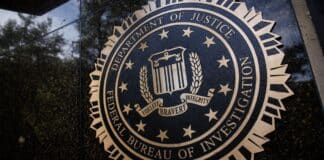In maneuvering to secure a pivotal endorsement from the United Auto Workers (UAW), President Joe Biden’s administration made the controversial decision to allow federal scientists to join this traditionally blue-collar union, sidelining legal objections. In a notable shift, the administration green-lit the organization of graduate students working temporarily at the National Institutes of Health (NIH) into unions.
This move was initially met with resistance due to claims they were not employees in the traditional sense. The decision to join forces with white-collar academics has resulted in them becoming a distinctly political and overwhelmingly Democrat-leaning group within a union known primarily for its blue-collar affiliations, at a time when the UAW is experiencing a decline in overall membership.
This strategic pivot was part of Biden’s concerted efforts to woo UAW leader Shawn Fain, who despite earlier criticisms of the President, endorsed him following the change in position on NIH unionization.
The incorporation of students and academics into the UAW, a group historically dominated by blue-collar workers, is part of an effort to counterbalance the dwindling union membership. This decline has been exacerbated by a National Labor Relations Board (NLRB) decision favoring the unionization of teaching assistants at private universities. A significant portion of the UAW’s membership now surprisingly consists of individuals from the academic sector.
It’s important to note that NLRB rulings do not extend to the Federal Labor Relations Authority (FLRA), which oversees unions for federal employees.
In June 2023, a collective of graduate student-level research fellows associated with the NIH pushed for the FLRA to authorize a vote on unionizing approximately 5,000 early-career scientists. The NIH initially opposed this petition. Reports indicated the FLRA dismissed the possibility of unionizing these temporary academics, stating they did not meet the legal definition of ’employees’.
The Biden Administration, through a submitted document, expressed the position that individuals covered under specific NIH training awards did not qualify as employees under the law.
Nevertheless, opposition from the NIH waned after discussions with the Department of Health and Human Services. Shortly after, the NIH agreed to recognize all individuals mentioned in the petition and expressed readiness to facilitate an election, reversing its original stance without clear explanation, apart from noting further consultations.
By December, the FLRA had certified the new union, marking a significant financial boon for the UAW through new membership dues collected from federal salaries.
“This marks the inaugural union of its type within the U.S. federal government, composed of early-career NIH researchers. Of the eligible voters, an overwhelming 97.8% supported the formation of the NIH Fellows United-UAW union,” announced the newly formed organization.
In a move reflecting this development’s broader political implications, the UAW extended its endorsement to Biden in January.
However, the creation of this union may pose challenges to the NIH’s reputation as a neutral science entity, following the controversy surrounding Anthony Fauci. The union’s overtly political stance and promotional activities have raised concerns, highlighting its progressive political leanings and the potential impact on the organization’s scientific orientation.
Union organizers have adopted a decidedly political and consistently left-leaning tone. Their social media channels actively endorse Bernie Sanders, and every member of the negotiating team includes pronouns beside their names.
A “predoctoral fellow,” recognizable by their bright green hair, stated in a public announcement that the union’s mission was to foster “a dedication to diversity” and to “elevate the diverse voices of NIH fellows from all walks of life” in order to create “fair systems.” An overwhelming 98 percent of those eligible opted to join the organization.





